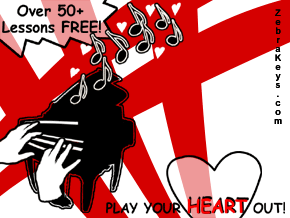Recommended
Categories
Music Theory
Lesson 32 - Natural Minor Scale |
|---|
I. Index1. Introduction II. Content1. IntroductionIn this lesson, you will learn about the natural minor scale. The natural minor scale is often used to create sad sounding songs.2. Playing the Natural Minor Scale Starting on CSince there are 12 different key names on the piano keyboard, there are 12 possible natural minor scales. Let's first look at a natural minor scale that starts on C, which is called a C natural minor scale.Below are the notes of the C natural minor scale. C, D, Eb, F, G, Ab, Bb, C Below is an animation of the C natural minor scale being played. 3. Other Names for the Notes of the Minor ScaleBesides naming the notes of the natural minor scale by their letter name (i.e. C, D, E, F, G, A, B), you can name the notes based on its position in the natural minor scale. This is useful when talking about natural minor scales in general, and not specifically about the C natural minor scale.You can name the notes of the scale using Roman numberals. For example: the first note is represented by the Roman numeral I (one), the secone note is represented by the Roman numeral II (two), the third note is represented by the Roman numeral III (three), and so on. Notice that this is exactly the same naming convention used for the major scale. You can name the notes of the scale using the description of its position in the scale. Notice that the first note is not called the first, but instead, it is usually called the root. Also, the eighth note is not called the eighth, but instead, is is usually called the octave (Italian for 8). You can also name the notes by using scale degrees. For example: the first note is called the Tonic, the second note is called the Super-Tonic, the third note is called the Mediant, and so on. Notice that this is exactly the same naming convention used for the major scale with one exception. In the natural minor scale, the seventh note is called the Subtonic, not the Leading Tone as in the major scale. I_________Root_________Tonic 4. Understanding How a Natural Minor Scale is ConstructedThe minor scale is made up of whole steps and half steps.A half step is any two notes with no notes between them. A whole step is any two notes with one note between them. Take a look at the illustration below of the C minor scale and notice where the half steps and whole steps are located. The keys of the piano keyboard in the illustration below have been spread out so that you can easily see where the half steps and whole steps are located. The whole steps are located between C/D, Eb/F, F/G, Ab/Bb, and Bb/C. The half steps are located between D/Eb, and G/Ab. We can use this pattern of whole steps and half steps to find the minor scale on all 12 keys. Below is a list of the minor scales starting on all 12 keys. A, B, C, D, E, F, G, A Bb, C, Db, Eb, F, Gb, Ab, Bb B, C#, D, E, F#, G, A, B C, D, Eb, F, G, Ab, Bb, C Db, Eb, Fb, Gb, Ab, Bbb, Cb, Db D, E, F, G, A, Bb, C, D Eb, F, Gb, Ab, Bb, Cb, Db, Eb E, F#, G, A, B, C, D, E F, G, Ab, Bb, C, Db, Eb, F F#, G#, A, B, C#, D, E, F# G, A, Bb, C, D, Eb, F, G Ab, Bb, Cb, Db, Eb, Fb, Gb, Ab 5. How Does the Natural Minor Scale Apply to SongsSome sad sounding songs are written using notes of the natural minor scale. When a song is written in the natural minor scale, most if not all of its melody notes as well as harmony chord notes come from that scale.6. ConclusionThe natural minor scale can be used to create sad sounding songs. What gives the natural minor scale its identity is its patterns of whole steps and half steps. In this lesson, you have learned how to play the C natural minor scale. There is a natural minor scale for each of the 12 keys.
Custom Search
|
Recommended Stuff
| Flash Plugin is no longer available. Watch Lessons: 32 and 33 from the videos below: |
Lesson 32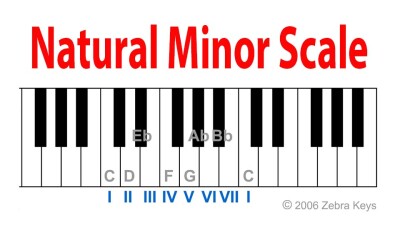 |
Lesson 33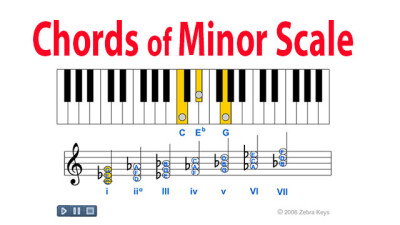 |
| C min | | | D min | | | E min | | | F min |
| G min | | | A min | | | B min | | | F# min |
| Ab min | | | Bb min | | | Db min | | | Eb min |
Intervals for Minor Scales are:
Root, WS, HS, WS, WS, HS, WS
Formula of Minor Scale is:
1, 2, b3, 4, 5, b6, b7
Notes for A Minor Scale are:
A, B, C, D, E, F, G, A
Learn Music Intervals
Notes for B Minor Scale are:
B, C#, D, E, F#, G, A, B
Notes for C Minor Scale are:
C, D, Eb, F, G, Ab, Bb, C
Notes for D Minor Scale are:
D, E, F, G, A, Bb, C
Notes for E Minor Scale are:
E, F#, G, A, B, C, D, and E
Notes for F Minor Scale are:
F, G, Ab, Bb, C, Db, Eb, F
Notes for G Minor Scale are:
G, A, Bb, C, D, Eb, F
Root, WS, HS, WS, WS, HS, WS
Formula of Minor Scale is:
1, 2, b3, 4, 5, b6, b7
Notes for A Minor Scale are:
A, B, C, D, E, F, G, A
Learn Music Intervals
Notes for B Minor Scale are:
B, C#, D, E, F#, G, A, B
Notes for C Minor Scale are:
C, D, Eb, F, G, Ab, Bb, C
Notes for D Minor Scale are:
D, E, F, G, A, Bb, C
Notes for E Minor Scale are:
E, F#, G, A, B, C, D, and E
Notes for F Minor Scale are:
F, G, Ab, Bb, C, Db, Eb, F
Notes for G Minor Scale are:
G, A, Bb, C, D, Eb, F
TRANSLATE this content
| Beginner Piano | | | Intermediate Piano | | | Advanced Piano |
|
List of 50 Free Lessons
Piano Basics  Lesson 1 - Patterns of Piano Keyboard Lesson 2 - Names of White Keys Lesson 3 - Names of Black Keys Lesson 4 - Grand Staff Lesson 5 - Note Durations |
Use our free Virtual Piano Keyboard in conjunction with these free lessons:
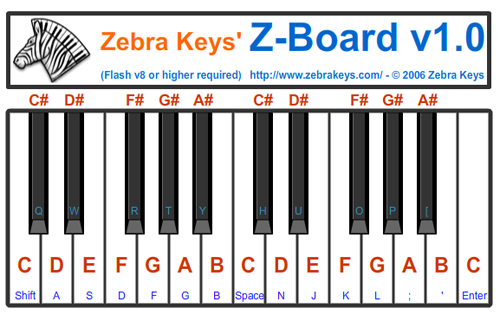 |
|
Beginner Piano Lesson 6 - Brother John Lesson 7 - London Bridge Is Falling Down Lesson 8 - Twinkle Twinkle Little Star |
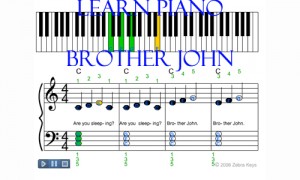 |
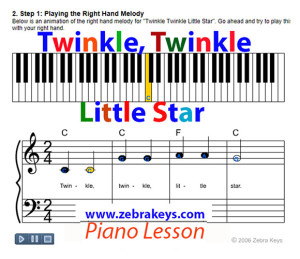 |
| Lesson 9 - Major Chord |
|
FIND any CHORDS using Free Virtual Piano Chord Chart 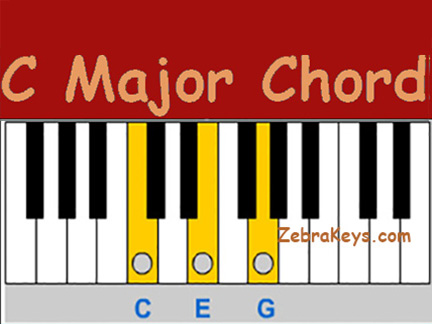 |
|
Lesson 10 - Three Primary Chords Lesson 11 - 12 Bar Blues Chord Progression |
| Lesson 12 - 12 Keys of Music |
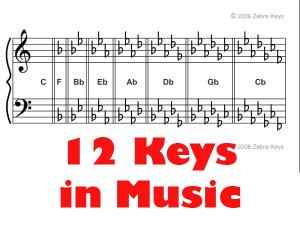 |
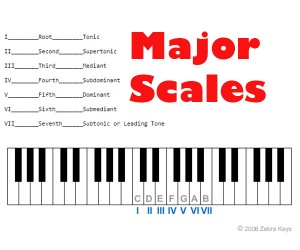 |
|
Lesson 13 - Major Scale
Lesson 14 - Musical Intervals Lesson 15 - Chords of the Major Scale Lesson 16 - The Circle of Fifths |
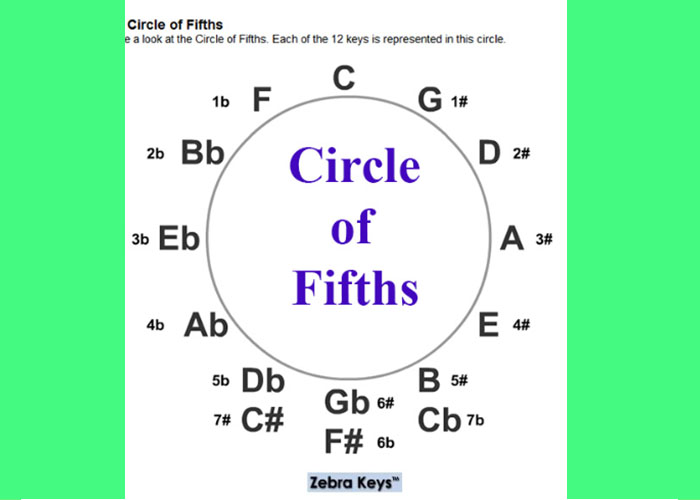 |
|
Lesson 17 - Chord Inversions Lesson 18 - Double Chord Pattern Lesson 19 - Broken Chord Pattern Lesson 20 - Arpeggio Chord Pattern Lesson 21 - Sounds of the Orient (Pentatonic Scale) Lesson 22 - Mysterious Sounds (Whole Tone Scale) Lesson 23 - Arpeggios |
|
Intermediate Piano Lesson 24 - America (My Country Tis of Thee) Lesson 25 - Silent Night Lesson 26 - God Rest Ye Merry Gentlemen |
|
Lesson 27 - Minor Chord Lesson 28 - Three Secondary Chords Lesson 29 - Dominant 7th Chord Lesson 30 - Major 7th Chord Lesson 31 - Minor 7th Chord Lesson 32 - Natural Minor Scale Lesson 33 - Chords of the Natural Minor Scale |
|
Lesson 34 - Melody as Octaves Lesson 35 - Root Chord Pattern Lesson 36 - Harmony Notes Lesson 37 - Major Chord Inversions Lesson 38 - Chord Inversion Straddles |
|
Advanced Piano Lesson 39 - The First Noel (Flash demo version) Lesson 40 - Auld Lang Syne Lesson 41 - Hark! The Herald Angels Sing |
|
Lesson 42 - Diminished Chord Lesson 43 - Augmented Chord Lesson 44 - 6th Chords Lesson 45 - Sus2 Chords Lesson 46 - Sus4 Chords Lesson 47 - Major 9th Chords Lesson 48 - Major 11th Chords Lesson 49 - Major 13th Chords Lesson 51 - Blues Scale |





